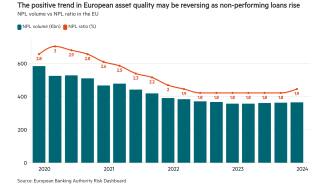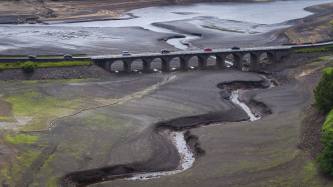It is no secret that the trillions of dollars needed to finance the green energy transition in the coming years will require investment not only from the public purse, but also the private sector.
With the COP28 conference in Dubai taking place at the end of November, what progress, if any, are we likely to see in terms of the flow of private funds to help companies and countries transition to net zero?
Stephen O’Driscoll, head of environmental, social and governance at the European Investment Bank (EIB), is optimistic that at next month’s meetings in Dubai, the private sector will be finally ready to engage.
So, what has changed? After attending Climate Week NYC this autumn, Mr O’Driscoll believes the private sector is now much more tuned into the topic and the need for transition finance. “The private sector was much more engaged in New York and so hopefully it will engage in Dubai,” he says.
“I felt in New York that the private sector now understands climate change as an opportunity rather than as a regulatory burden. Companies and financial institutions see the imperative to have a positive business case around climate change,” he continues.
So can the “change in tone” from the private sector lead to a “sharper discussion” at COP28 on how to turn this rhetoric into reality? Mr O'Driscoll says he is quietly confident.
Recently, the first global stocktake of where countries are in meeting net zero commitments made under the Paris Agreement was published by the UN Convention on Climate Change.
A renewed sense of urgency on climate
The framework, which was published in September, called for “greater ambition and accelerating action”, and talked about the need for “increased private sector engagement to make financial flows consistent with climate-resilient development”. Efforts must be pursued on all fronts towards meeting investment needs, the framework stated, including making financial flows consistent with a pathway towards low greenhouse gas emissions and climate-resilient development.
But in addition to the global stocktake, Mr O’Driscoll credits the publishing of the latest report by the Intergovernmental Panel on Climate Change and the recent update by the International Energy Agency on its seminal 2021 net zero report as “bringing into sharp relief the gap” between where science shows the world needs to be on climate action and the reality.
“Scientific data and the horrible and intense weather events we have seen this year makes the whole world understand the urgency,” he says. When asked how this statement sits with the backlash against net zero in various developed countries, not least the UK, Mr O’Driscoll replies: “I’d like to think the court of public opinion can see through this populist backlash.”
Biodiversity loss and nature a decade behind climate measures
Mr O’Driscoll is also energised by the fact that “climate and nature are now spoken about in the same breath”, although he believes more could be done to tackle both crises if the climate and biodiversity COPs were combined. “Keeping them separate means intersections between the two will be missed,” he says.
Mr O’Driscoll welcomes the recently published recommendations by the Taskforce on Nature-related Financial Disclosures (TNFD) aimed at helping bring corporate activities in line with the Kunming-Montreal Global Biodiversity Framework. “The TNFD work is excellent,” he says. “It brings into sharp relief how we need to accelerate on nature and biodiversity risk. Lots of people now understand that 50% of GDP is dependent on nature.”
For the EIB, Mr O’Driscoll says it is important it follows through on common principles around nature and work on mainstreaming biodiversity into its lending activity, like it has with climate. “Action in general around stymieing biodiversity loss and restoring nature is unfortunately about 10 years behind climate measures,” he says. “We need to accelerate and reduce the differential down to a couple of years. We need to move very fast.”
The EIB is working with the European Commission on “how to scale up biodiversity finance using the financial instruments and products it has at its disposal more effectively,” Mr O’Driscoll says. Next year will also see it work on defining a nature and biodiversity risk screening tool similar to the one it uses for climate risk.
At COP28, multilateral development banks (MDBs) plan to announce a set of common principles for identifying and tracking “nature-positive finance”, Mr O’Driscoll says. Terms like “nature positive” are currently employed in varying ways by different organisations, making it hard, if not impossible, to track real progress.
Read more from this series
The overhaul of the EIB to turn it into the EU’s “climate bank” is widely praised. Yet MDBs as a group are in the spotlight for failing to bring their operations in line with 21st century challenges. Despite promises of change, with the World Bank’s new president Ajay Banga unveiling a laundry list of measures to “eradicate poverty, but on a liveable planet”, at the recent IMF and World Bank meetings in Marrakesh, there was no explicit commitment to immediately ending the financing of fossil fuels.
“As a system, MDBs work together on climate change, and nature and biodiversity,” Mr O’Driscoll says. “We have been co-financing with the MDBs and the World Bank for many years. Co-financing means we have to collaborate, but I think we can probably collaborate better. We are very aligned on where we need to go to scale up climate financing and where we need common methodologies and so on to help this.
“We are all individual MDBs, but that’s not to say we can’t work together, complement each other, draw on our respective strengths and collaborate with governments. We hope to coalesce around a long-term vision and a common MDB approach.”












